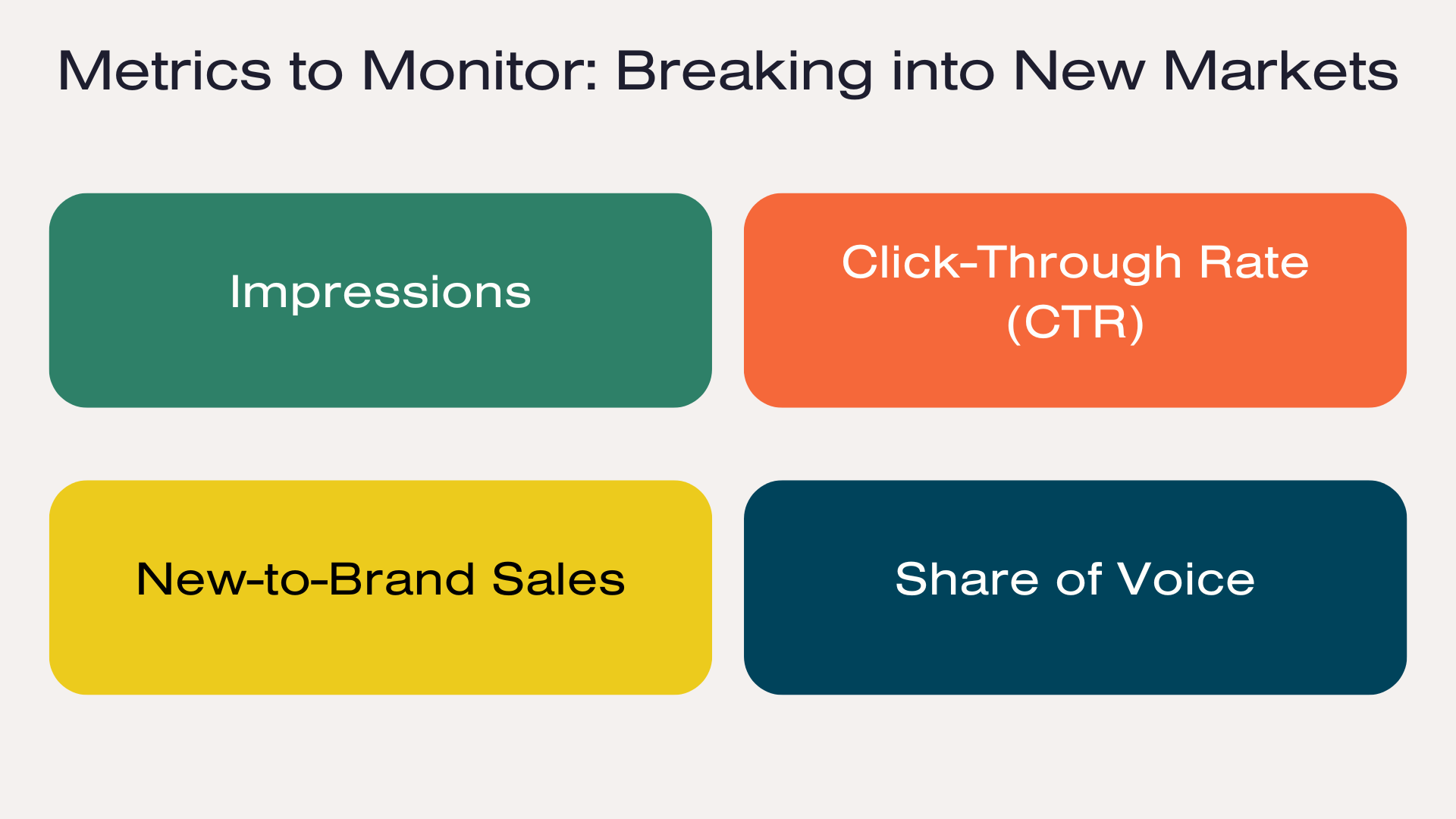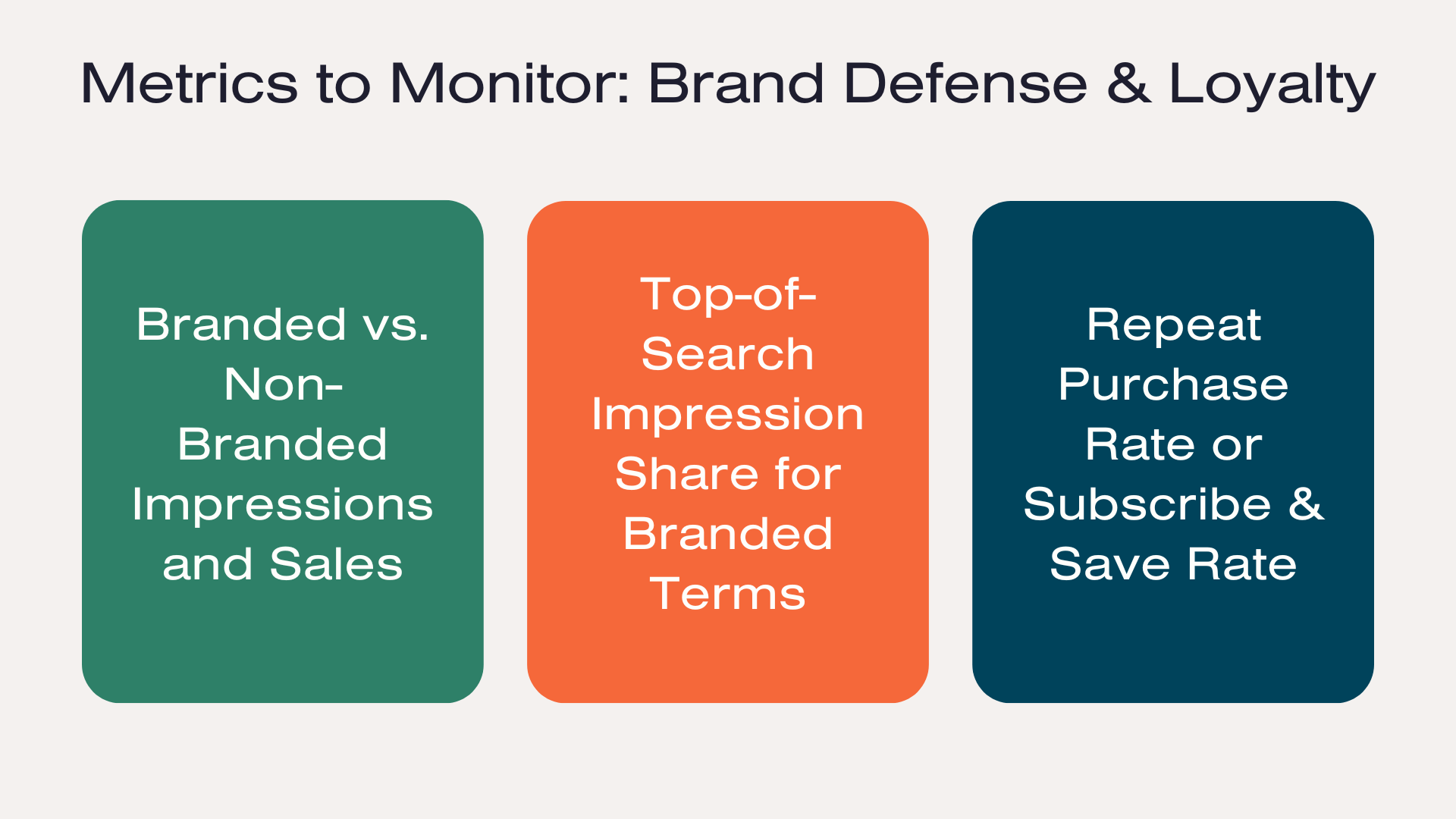Article
10 Key Amazon Marketing Metrics & KPIs to Track Campaign Performance
Within the world of Amazon marketing, understanding which metrics & KPI’s to track is essential for determining your next steps to driving performance. Whether you’re managing campaigns in-house or partnering with an agency like Brandwoven, the key to making informed decisions lies in knowing what data matters most.
This article walks through the critical performance marketing metrics every Amazon brand should be tracking based on 3 common strategies, the rationale behind each, and how to obtain them.
Determine Your Amazon Marketing Strategy from Overall Business Growth Goals
Before diving into Amazon metrics, you need to have well-defined goals for where you want your marketing efforts to take your business.
Everyone loves ROAS/ACoS efficiency. Toyota Priuses are extremely efficient cars, but should I be driving one in a race against sports cars? NO!
Make sure your business’s overall growth strategy is dictating which Amazon KPIs will work best for identifying whether or not marketing campaigns are working towards your goals.
Amazon Marketing Strategy #1 – Breaking into a New Market
When breaking into a new market or launching a new product, your primary goal isn’t profitability. Instead, you want visibility, new customers, and insights into how your product resonates with shoppers. Here are 4 key marketing metrics to focus on:
- Impressions – These show how often your ad is being seen. For new products, more impressions mean better visibility.
- Click-Through Rate (CTR) – Indicates how compelling your product and ad copy are. A low CTR may suggest the need for improved creative or more relevant targeting.
- New-to-Brand Sales – This tells you how many customers are buying from your brand for the first time, an essential signal when expanding reach.
- Share of Voice – Helps gauge your presence in key search queries compared to competitors.
Where to find them: Amazon’s Advertising Console, Brand Metrics dashboard, and Search Query Performance reports are the best resources to reference. Share of Voice is only available through third-party tools like Pacvue. If you don’t have access to third-party tools, Brandwoven’s data reporting capabilities can also assist with tracking these metrics and consulting on your marketing strategy.
Barriers to success: The biggest barrier to a great entrance strategy is return on investment. ROAS/ACoS will likely be poor (Under $1 or Over 100%) for new products/brands, and at some point a profit is required. While focusing on the key marketing metrics above, be sure to have a defined ROAS/ACoS level that all stakeholders can expect and are comfortable with.
Amazon Marketing Strategy #2 – Brand Defense & Customer Loyalty
Once your brand has carved out a presence, you need to protect it. Competitors are likely bidding on your branded terms, making customers who already know, and are searching for, your brand name a high-value target. Amazon performance metrics for brand defense focus on retention and maintaining dominance:
- Branded vs. Non-Branded Impressions and Sales – A strong share of branded impressions suggests you’re protecting your territory. Using portfolios or a third-party tool to group Branded and Non-branded campaigns can help separate Amazon performance metrics and better focus budget allotment.
- Top-of-Search Impression Share for Branded Terms – Ensures that you’re appearing at the top when customers search for your brand.
- Repeat Purchase Rate or Subscribe & Save Rate – Measures customer loyalty and can reveal when customers are being poached by competitors.
Where to find them: Brand Analytics, Sponsored Brand and Sponsored Product reports, and Search Query Reports.
Amazon Marketing Strategy #3 – Efficiency of Advertising Spend
If your brand has a longstanding foothold in the market, your goal might shift to maximizing profitability. Now, you’re finally at a point where it is okay to hold ROAS as the priority performance marketing metric:
- Return on Ad Spend (ROAS)/Advertising Cost of Sales (ACoS) – Basically your return on investment. It is key to look at this by campaign grouping as well as an account overall. You will need different definitions of ROAS success for a Branded campaign compared to a campaign targeting Generic keywords.
- Total Advertising Cost of Sales (TACoS) – This broader metric looks at Amazon advertising spend as a percentage of total sales, giving a better picture of how ads are supporting overall business growth goals. ACoS might be high for a given category, but if that Amazon advertising spend is leading to larger organic sales growth, TACoS will identify that opportunity. This KPI is not available through Amazon’s reports; this metric must be calculated by hand or via third-party tools. Reach out to our team for assistance calculating TACoS.
- Conversion Rate (CVR) – Indicates how effective your listings are and if they are reaching the correct shoppers. Increasing CVR can help guide your campaigns to better returns even if CPC is increasing.
Where to find them: Campaign Manager, Business Reports, and third-party tools.
Let Business Growth Goals Shape Your Performance Marketing Metrics
Don’t get caught in the same trap that many brands fall into and obsess over ROAS if your true business goal is growth. On the flip side, don’t chase impressions if your aim is profitability. Let your business growth goals set your marketing strategy and build your Amazon performance metrics & KPIs reporting around that framework. Whether you’re breaking into a new market, implementing a brand defense strategy, or aiming to optimize every dollar spent, Brandwoven can help you on your journey.


